Table of Contents
How to Get More Architecture Projects: Marketing for Architects
The architectural industry isn’t typically built upon repeat business. Getting qualified new leads every month is what keeps thriving architecture businesses alive.
Marketing has evolved so fast most businesses are struggling to keep up regardless of the industry. How can you leverage your strengths and improve on your weaknesses to get get more traction?
Losing sight of potential projects in your pipeline is at its core the reason architecture firms struggle with growth. If you can’t wait for the tips and tricks, scroll past the analysis section to get more of the hacks to marketing for architects.
Where do architects get their leads (projects)?
We’ve asked architects regularly, “Where do you get your leads?”
In our official poll, the architects consistently said “tender websites” and “word of mouth” as their top two answers.
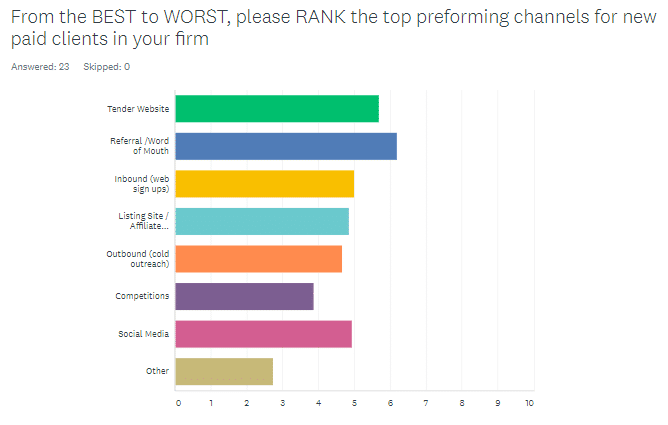
Question: “If you could get more projects as an architect, would it help your business?”
The short answer is of course, “yes.”
However many Architecture Design firms, don’t know what to do in order to get more projects.
Your goal should be automating as much as possible to continue to add new architecture design projects every month.
Architecture firms haven’t changed their approach to lead generation much in the last 50 years
The majority of architects admit they’re reluctant to adopt new software tools and channels for driving sales.
The result is obvious.
Less potential architecture projects = less proposals sent out every month = Less revenue.
We ran a poll with 23 successful architects and found that on average, each architecture firm was submitting 0-1 new proposals per month.
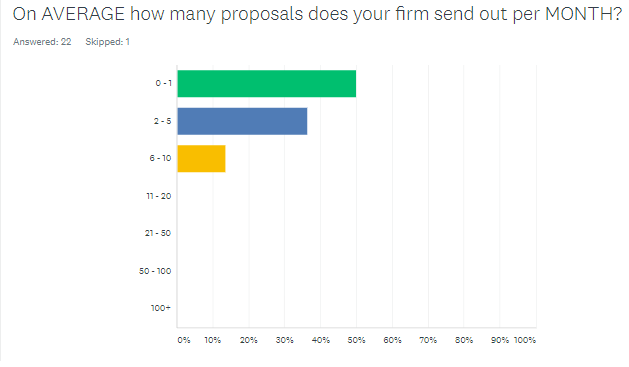
Why are architects having trouble getting new leads:
Top 7 Reasons Architects Struggle With Generating Sales:
No “standard” for Sales Practices in Architecture:
The current processes used in every other industry aren’t picked up by Architects
Architecture companies don’t invest in sales training for client facing architects. There is no such thing as a rulebook of marketing for architects.
Many architects question how much “sales training” would improve revenue and closing more deals.
Sales and Marketing isn’t taught to Architects in school:
Architects seldom take digital marketing, business, or finance classes prior to becoming architects.
Most architects are unfamiliar with marketing technology trends that will allow them to optimize approach
The latest marketing strategies aren’t easily understood and therefore aren’t considered in business strategy
No Use of Marketing Funnels:
If a potential client hears about one of your projects, how easy is it for them to get in touch?
Most Architecture Websites Don’t Have a Submission form for potential clients.
Even when Architects get emails, there isn’t a Customer Relationship Management tool (CRM) or Marketing Tech Stack in place for Architects to continue to follow up.
Zero Marketing Experimentation:
Architects don’t pick up on cutting edge marketing tools to play with different strategies
Everything is digital these days – Architects don’t see the need to try something different than what they know
Digital Design vs Physical Design:
Design architects can understand how people will interact with a space in the real-world. But they often struggle with understanding how users interact with a digital space.
Experience with digital processes and tools is a requirement for winning digitally and in the future
Prioritization on Architecture Clients:
Architecture work is project-based and therefore every day until a deadline is important.
There is less room for focusing on where the company would like to be in 6 months much less a few years.
Limited Budget for Marketing Solutions:
There is limited time spent of sales and marketing for architects due to their laser focus on getting their projects completed.
Good Economy = Great Times for Architects
The current architecture services market is less competitive in a good economy… If everyone has projects, life is good.
But what happens when the economy slows down?
Will the same amount of architecture work available today be around for the next six months?
If you’re not competing each and every day for market-share- you might be missing the boat.
Why should architects change their approach to generating leads if everyone has more than enough on their plate at the moment?
The economy and home buying power of consumers has fueled the economy for the last 10 years.
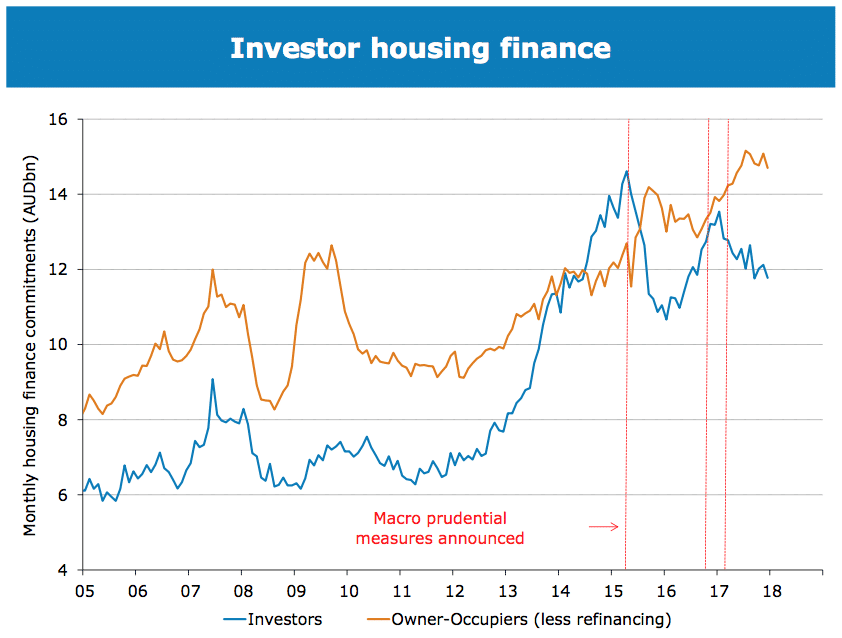
For the first time in ten years, home prices have not gone up.
Covid19 And Architecture

It’s simple supply and demand.
If there are less architecture projects and just as many architecture firms around; Someone is going to lose out.
Nobody could have foreseen the world’s economies shutting down for months on end.
When nobody is buying anything, the services of Architecture firms become a non-priority.
Some of the largest Architecture firms in the world will struggle in the coming months as projects get completed without new projects firmed up on the horizon.
Nobody in the Architecture Industry Predicted the Corona Virus
As the flow of cash hits an all-time low, there are going to be serious consequences for the architecture industry.

How can all the architecture firms remain competitive and profitable if they’re competing for fewer projects?
In the long run, modernization of your processes will be one of the key differentiators of the design firms that thrive and those that fade.
Architects will have to adapt to a tougher system and use new tools to gain an edge.
How are you changing your business development practices to prepare for a slower economy after Covid19?
Now is the time that you can put in the work to survive the coming months with new processes and tools.
What have you done so far?
What can you do to improve your lead generation within your own architecture design firm?
These are scary questions only if you haven’t prepared anything and don’t intend to in the future.
Let’s dive into some new approaches.
Is Word of Mouth the Only Approach to Generating Sales for Architecture Services in 2020?

Architects need to stop relying so heavily on traditional methods of getting new projects. Especially if you’re in the residential sector, you are leaving money on the table by not looking at how to boost leads from other channels.
Just like lawyers and dentists, architects say referrals areas a major source of new architectural projects.
Becoming more adaptable to today’s business environment requires diversifying efforts across all channels. This means looking at organic reach, social media, and exploring more digital marketing techniques. Marketing for architects doesn’t have to be hard.
How the Modern Digital Marketplace has left Architecture Behind
Architects expect to continue to get referrals and introductions like it’s the 1960s.

The rest of the world has gone Digital and Architects Are Waiting for an Invitation
If you’re not able to go to as many events as previously possible due to the corona virus, that means you need to get creative.
Most people have been using social media platforms to “network” and build potential client relationships online for years.
The amount of networking taking place digitally has far exceeded the amount of people participating in events.
Think of it like a numbers game.
If you’re not reaching a larger audience than your competitors and showing them how amazing you are; then you’re going to lose in the long run.

There are two fundamental obstacles that prevent “word of mouth” from being effective in generating substantial leads for architects: visibility and reach.
Visibility:
While there are more projects available in total than ever before, people still have the same amount of in-person reach. There are more architecture firms in existence today than ever before as well.
Why are architects expecting to hash out deals at events like they did 50 years ago?
Reach:
If you’re only focused on the traditional methods of engaging with potential customers, you might make some waves at events and in the eyes of your architecture customers. You are however missing the
Why relying on Networking and Referrals isn’t working:
Architecture Events Can Cost a Lot of Money:
Many events require tickets, booth fees, transportation, hotels, flights, and more. However free events do exist and these can be done at scale.
Event networking isn’t efficient:
The 1 for 1 approach is far more intimate than an email. Yet, there’s an inherent fallacy in play.
What if the person you’ve met at the event and spent an hour with isn’t a buyer?
It’s always a numbers game. We need to speak with enough new people throughout the duration of a conference to create new contacts.
Architects are a Tight-Knit Community:
At events, architects will often catch up with old classmates or colleges rather than putting in the time to develop new potential clients.
Missing the follow-ups :
Architects miss opportunities to stay at the top of their client’s minds when they miss follow-ups.
How many of these new contacts made at a conference go into a CRM? Often the answer is very few.
Events are Time Consuming:
Even if you’re attending one architecture event every two weeks, the amount of time to discover the events, plan, attend, and follow up is many additional hours of work.
No Incentive Models in Architecture Firms:
If you bring in a new deal, does anyone get paid? Aside from the owners and sales development representatives (SDRs), many architect firm employees aren’t incentivised to bring in new projects.
Outside of the organization, there are next to zero paid referral models.
Events are important given there are seemingly more opportunities than ever, spending time on a one for one basis at events in hopes of getting a new client might not work as it once did.
Quick Tips for Architects That Want More Referrals
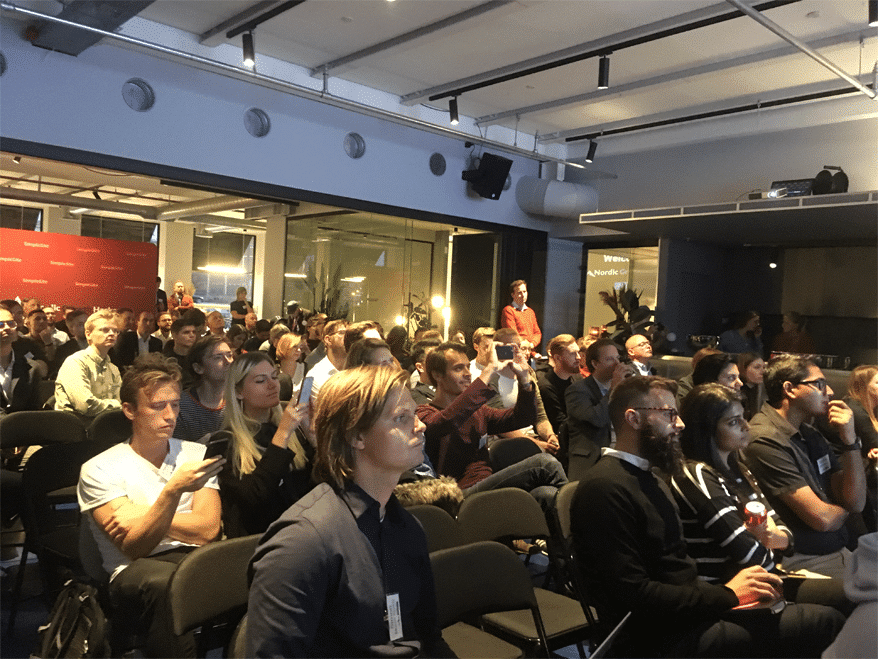
If you’re hell-bent on doing in-person events, lets focus on techniques that can improve your approach.
How can architects get more value and leads out of regularly attending events?
Encourage all architecture team members in the company to attend events
After-work networking events can be great spaces to gain an edge by learning and making new connections.
Being represented at events is a huge way to show off your firm and build your brand.
Encourage your employees to go by posting events on internal communication channels and in office break rooms. Leadership needs to encourage people to go.
Consider offering incentives for those that attend events outside of work hours in the form of recognition, awards, small bonuses, gifts, days off, commissions, and swag (shirts, mugs, etc).

Force Yourself to Follow the “4 minute rule”
Only spend a maximum of four minutes with every new contact at an event until you’ve met 20 people.
Find out what they do and who the highest priority is, then go after the highest priority people again (at the same event) for a longer dialogue.
Connect with Everyone on Linkedin On the Spot
Linkedin will super-charge your network and allow you to retain all the connections you’ve made in the span of a night. It’s especially helpful if you’re bad at remembering names (like all of us).
Nobody is doing this:
After the event, post a status on linkedin with a few pictures and tag the event organizers and the new connections you’ve made at an event.
This will not only increase your company reach but also boost your personal brand as well.
Use a CRM to manage your newest architect connections
Our memories are short. The day after the event, take a few minutes to add the new connections you’ve made at the event into a CRM. Include notes so you can remember what potential the deal may have in the future.

Email Automation with Merge Fields for a Friendly “architect hello!”

If you’ve managed to grab a business card then you should add them to a personalized general outreach message using merge fields.
These merge fields give the chance to enter their names and your message will read like you’re reaching out to them individually.
Architects and Digital Visibility

Architects by nature are artists and often point to the fact that they were schooled traditionally in design, not in digital marketing or business development.
And there’s nothing wrong with that. At all! But this also means we can consider these elements of the business, a challenge. Not something we have to avoid.
Increasing Digital Visibility for Architects
Architects need to step up their digital marketing game. Plain and simple. Marketing for architects needs to gain traction and be acknowledged in the architecture industry.
Updating the user experience (UX) of your architecture websites
What does bad UX look like? Imagine if you came to a website seeking architecture services but then experienced something like below.

You might consider taking your business elsewhere if it’s not aligned with your expectations.
Improvement opportunities for your Architecture website:
User Experience (UX):
Architect websites are an opportunity to show off your portfolio.
Getting to a website that doesn’t match the elegance of the brand can have a negative effect on your reputation.
Build something clean, speedy, and easy to navigate for your users.
Search Engine Optimization (SEO):
Search engine optimization for architects is a major blind spot in this industry.
Getting found via google search is the difference between having a booming business and barely getting by.
Online Portfolio:
Architecture design projects are exceptionally visual.
Let your visitors see what you spend your career building with more than one picture of every project.
Put time into your portfolio.
Give every project detailed descriptions and weave the story of how the project came into existence.
More imagery and content in a clear URL structure will make a difference.
Conversion forms:
If someone wants to get in touch with your company about a project, don’t make it hard for them to do it.
Most architecture websites only contain a phone number and an email address.
Without a conversion form on your site and sub-pages, you lose countless opportunities to begin the conversion funnel and establish your pipeline.
How conversion forms improve sales of your architecture services
Turn more web visitors into customers.
Many of these people have found your site and may eventually make a financial commitment. Why are you making it harder for them to commit to a conversation?

Conversion forms are a “zero-touch” method that allows architecture clients to enter your sales funnel as “leads” to eventually become paying customers.
The benefits of using conversion forms vs an email address
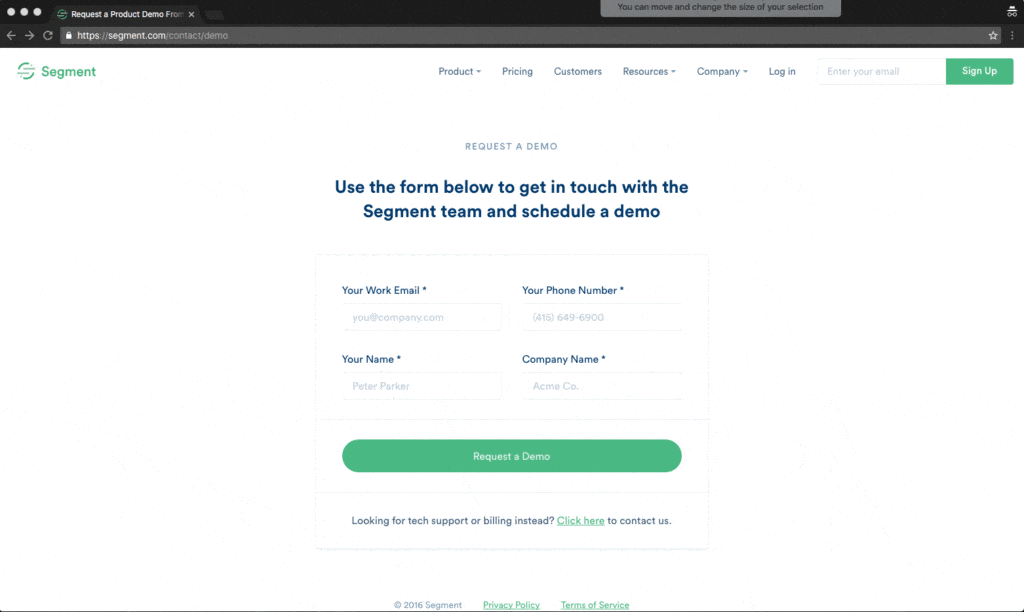
- Quickly build a lead list
- Tripwire forms allow you to capture visitors via downloadable content
- Exit pop-ups with good offers grab visitors before they leave
- Better tracking on which pages and forms convert
- Increases monthly subscribers for newsletters
- Launch effective referral campaigns
- Segmentation of users = more relevant user experience
- Establishing a stronger pipeline based on A/B testing
- Lose less deals – integrate all incoming leads with sales tools
- Increase your conversion rate with less hassle to get in touch
- Capture interested potential clients while they’re looking at you
Having a conversion form is an essential building block in creating a relationship between the architect and potential client.
Architects must make it easy for website visitors to get in touch via a form at the top of their homepage, landing pages, and other pages of the site.
If an architecture firm could save one deal per year by allowing clients to more easily convert on a website, they would have more than enough development money to afford the updates.
Why Placing an Email Address on Your Architecture Website Doesn’t Get leads
- Crawling Spammers
Email addresses get crawled and eventually become overly spammed by anyone selling anything. It becomes a challenge to see what is genuine. - Spam Folders
Real leads can end up in your spam folders. If you’re not checking for these forgotten leads, that person will have time to look elsewhere. - No Structure
Forms have become incredibly sophisticated and you can pull in all kinds of data fields these days with ease.
How Do I Create a Conversion form?
If you’re just trying to capture leads on a simple WordPress site there are dozens of tools like contact form 7 or WPForms that can do the job.

A quick search of “WordPress form plugins” will turn up dozens more free forms.
An architect’s website with a conversion form which yields direct communication is immediately perceived as more engaging and approachable to its target market. Try this. It works!
Make More Content: Architects don’t create enough Content

A crucial function of any architecture design business is to show off what makes them unique and maintain active relationships with clients. How can you do any of that with a static three-page site?
- Create a blog on your architecture company website:
The blog is what allows you to push out thought leadership, stories of your brand’s success, and of course, talk about the latest trends/news. - Tell your company story:
The “about” section of architecture design firm websites is usually missing character and doesn’t elaborate on your awards, won competitions, and the talented people working at your company. Do this already! - Public Relations (PR) in Architecture = Major Wins:
When you grab a big deal, win a major competition, or finish a project; let the world know and give industry publishers a chance to cover your awesome architecture company.
Content can be the biggest opportunity to scale your company if done correctly.
Social Media Tips for Architects:
Social media is one of the most underutilized channels for content and has turned into a content desert or an afterthought for architects.
Example of Social Media Post From Architecture on Linkedin
How architects can improve their social media game
- Provide Value:
Give clients powerful industry insights, lists, answer questions about your architecture projects, and be a bigger part of the conversation. - Create content about your architecture office culture:
People like doing business with people they like.
Your clients and the clients of the future want to see who they’re working with. Show that you’re a cohesive team and you work together. - Add video and images of your architecture projects on SoMe:
How are things coming along? Even if your project is on-going, show the amount of time you’re taking to do site visits. Show the site visits.
Video content is considerably more engaging if done correctly. Take the time to get noticed by creating some compelling videos. - Create a ton of content at once and schedule it:
Using a slew of SoMe posting tools, you can make a ton of content all at once and release it over the span of weeks or months.
- Utilise architecture influencers:
There’s dozens of architecture influencers out there. Many small businesses use influencers to boost their profile and engage with their audience.

An architect’s work is normally carried out away from the clients’ viewing, as a result, there is an immediate lack of visibility between these two parties.
Give your content a chance to delight current and new customers by regularly releasing great content across multiple channels.
Where are architecture firms listed?
A simple quick way to build some online visibility is to get listed on directories and listing sites for your niche.
Warning: This is a small win, don’t use this as a bulletproof marketing method.
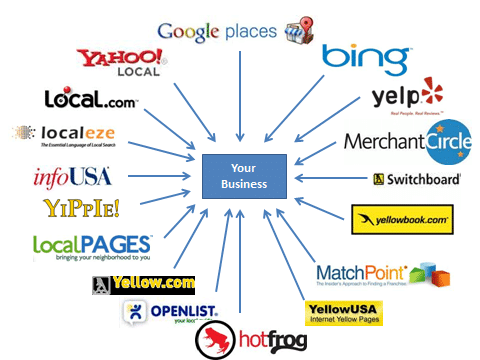
You need to decide which one’s are worth your time and even money, but it’s worth a look.
If you’re not being found in a google search and they don’t know about your website already. How else will people discover you?
Honestly… What do you have to lose?
You’re fighting with your competitors over a very limited set of search phrases. You need to be doing everything you can to match the competition and even more to stay ahead.
The unfortunate side of this technique is that it’s one of the only ways architects are currently marketing themselves because it resembles the traditional methods of print advertising.
This is not a successful strategy. Don’t go all-in on listing sites. If we searched for architects like we use a phonebook today, this might work. But we don’t.
Put Your Architecture Business on Google my Bussines
Typically, people want to hire an architect in their area. To appear first for those searching in your location, register a Google My Business (GMB) profile and optimise it with a complete list of your services.
Create an Inbound Marketing Funnel for Your Business

To maintain an engaging online presence that yields future client leads, architects need to prioritize establishing a marketing funnel.
After someone “converts” on your website (they get in touch), what happens?
What is the sales process? Is there a process?
Usually, top management or the person in charge of sales cobbles together something in the way of a system. Surprisingly it’s a lot less organized than other industries.
“Steps to the sale” defined for architects:

Step to the sale example:
- The lead comes in (inbound)
- Contact is made
- Lead is qualified
- Meeting set
- Needs defined
- Proposal created
- Proposal approved
- Negotiations
- Contract Signed
Do you have a defined sales process with rules and compliance for each step along the way?
Setting clear and defined steps after a prospect gets in touch allows you to take a process-driven approach. The goal is unified across all departments, convert more prospects into paying customers.
Related Resource: PuncherPortal – E-learning platform
Get a CRM
After an email or a lead comes in and you’ve qualified the potential customer. How are you tracking the next steps? How do you avoid losing customers due to disorganization?
There’s a name for tools that allow you to follow every architecture lead along the journey to becoming a paying customer. This type of tool is called a CRM (customer relationship management).
There a ton an inexpensive and enterprise-level tools like Salesforce, Pipedrive, or Close.io. You can set up funnels in the matter of a few hours and monitor all sign-ups.
Defining your sales process:

Ask the right questions and it becomes incredibly easy to discover if you’re missing a step in the sales process.
Questions to ask the sales team at your architecture company:
Warning: Make sure you’ve established a good rapport before asking a sales teams a ton of pointed questions.
- What are the steps to the sale?
- How do you qualify a lead?
- Which platforms/channels are we using to get our best projects?
- How many calls are made to each client before you give up on them?
- How many emails go out before you change a deal status from, “interested” to “no contact made?”
- Which tools are you using for scheduling calls or meetings?
- At what point in the funnel do you push the lead back into receiving marketing emails?
- What is our proposal to closing ratio?
- Who is in charge of case studies and our referral program?
If your sales team can’t answer these questions with ease or the answers are confusing… You may have an issue with your funnel.
Having a system in place will allow architects to monitor and evaluate prospective clients that are trying to get in touch.
They also should be able to have a robust reporting system that allows them to optimize their approach.
Setting up the marketing funnel and sales process in your architecture firm
Architecture firms should strive to track the progression of a client’s behavior that led them to eventually make purchasing decisions.
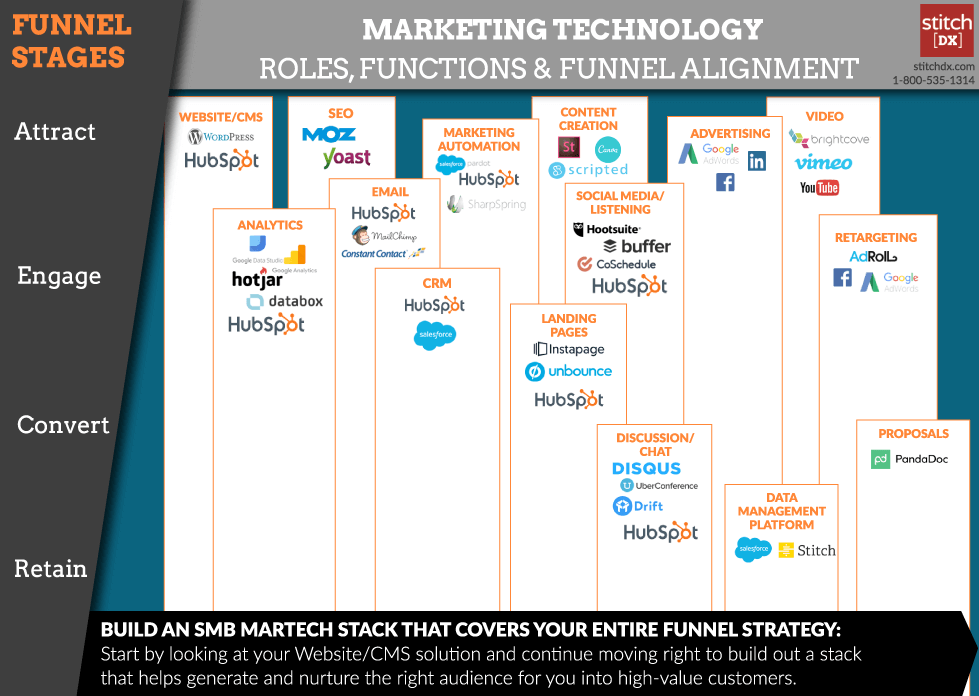
Getting serious on implementing a variety of tools can be a nightmare if it’s your first time creating a marketing tech stack.
Work with a growth agency like Klint Marketing to help to implement your marketing tech stack.

The goals of your marketing funnel simple:
- Attract:
Get people to your website and create content - Engage:
Create trip wire content and give people a chance to get in touch via forms across your site. - Convert:
Turn these visitors into paying customers a making a bullet-proof sales process and using templates to reduce time. - Retain:
Keep the customers happy, get testimonials, create case studies, and ask for referrals.
If you implement the framework, the result is getting more leads and closing more deals.
Marketing for architects should be more focused on inbound marketing. There’s an opportunity for the architects and design firms that start doing it well.
Get a DealFlow Tool: Sign Up With ArchitectureQuote for fresh leads:

When business is good, everyone is happy. What happens when leads slow down to a trickle?
How do architects keep the lights on if they are only working up to their latest deal? New projects can come from anywhere.
All architects should sign up with ArchitectureQuote to receive a steady stream of alerts for government Tenders and apply to each one that fits the architect’s own capabilities.
A progressive architect should be the first firm to set a meeting with organically generated leads with people seeking their services.
Plan to work on smaller freelance style projects via third party websites to keep the architects in one’s firm busy without having to lay people off.
You can even use some tips and practices that Ecommerce Marketing companies use mlike having your site miobilke friendly-
Conclusion
There are definitely struggles cracking the foundation of the architectural industry. Adapt to current working climates now so you can more quickly scale in the future.
Architects need to break free of tradition and work smarter. The first step is recognizing the problem.
Definite changes that align with the moving dynamic of today’s business environment and purchasing decisions. Take chances and experiment.
The field of design has become more segmented, with more options and alternatives for clients to pick and choose from.
Architects are now competing against interior design professionals as well as home improvement stores, both of which cater to more budget-conscious clients.
Since architects cater towards a more exclusive, wealthy client they must to everything in their power to offer a complete package. Today’s world establishing a personable relationship needs to be a part of that package.
Now with more digital platforms and competition, there is a greater need than an effort to produce content across different channels in order to capture more leads on your own website.
It is then crucial for architects to have a responsive and engaging online presence that emits visibility and the opportunity for a relationship with the architects to be established.
However, the job isn’t done once you’ve managed to capture new prospects. Your sales process and the funnel will ultimately be the difference in nurturing leads into paying clients.
Word of Mouth will never be the only effective alternative to the expansive reach of a solid digital online presence and strong sales funnel. Marketing for architects is the only step forward!

![Marketing Tips for Architects [2020]](https://architecturequote.com/wp-content/uploads/2019/11/guide-to-getting-achitecture-leads.png)










Wow! This is great! Marketing has always been an issue for us architects. We’re trained in the art of building design… not business.
Basically- This is Fantastic.
Amazing post! Thanks for sharing this!
Bookmarked! Keep it up!
Thanks for sharing amazing post
Just stumbled onto Architecturequote! Why is nobody else writing this stuff?! Great job guys!